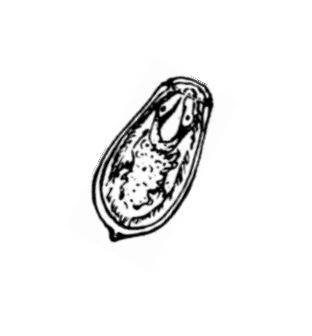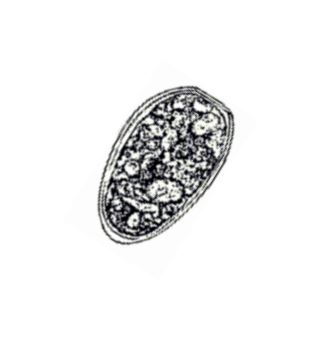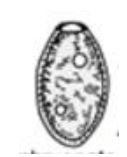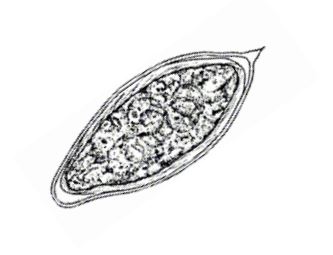Primate Intestinal Trematode Parasitology
1/6
There's no tags or description
Looks like no tags are added yet.
Name | Mastery | Learn | Test | Matching | Spaced |
|---|
No study sessions yet.
7 Terms

Clonorchis and Relatives
• Includes Clonorchis, Metagonimus, Heterophyes and Metorchis
• Liver and Intestinal flukes
• Difficult to speciate
• Pathology usually correlates with parasite burden
• Morphology of both eggs and adults is similar
• Size: 25-32µm
• Brownish or yellow in color
• May or may not have “shoulders” at operculum and knob on opposite end

Fasciola and Fasciolopsis
Fasciola:
• Large liver fluke
• Bile obstruction, abscesses, sclerosis and cancer
• Size: 120-180µm
• Brownish to yellowish, may be stained with bile from the liver
• Operculum may be wider than that of Fasciolopsis
Fasciolopsis:
• Intestinal fluke
• Diarrhea and GI issues
• Size: 120-180µm
• Brownish to yellowish with operculum

Paragonimus
• Lung fluke
• Adults can survive for decades
• P. westermani (Old World) and P. kellicotti (New World) are the most common
• Same clinical significance as dogs and cats
• Size: 65-120µm
• Various species are difficult to distinguish
• Light to medium yellow-brown with shoulder at operculum

Dicrocoelium
• Size: 30-40µm
• Operculated
• Bilaterally asymmetrical
• Miracidium is visible inside but may be difficult to see if egg is stained with bile

Schistosoma mansoni
• Size: 110-180µm
• Lateral spine
• Stool

Schistosoma haematobium
• Size: 110-180µm
• Terminal spine
• Urine

Schistosoma japonicum
• Size: 65-110µm
• Vestigial lateral spine
• stool